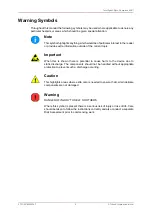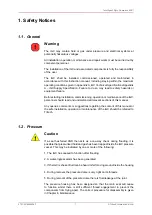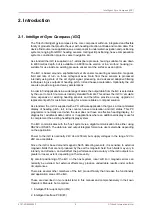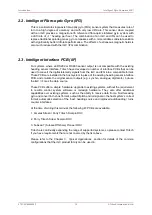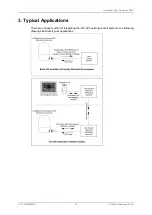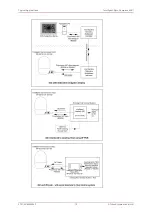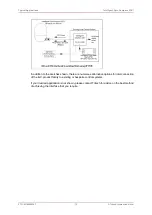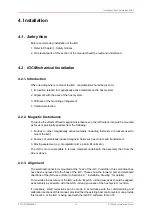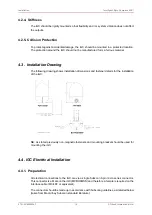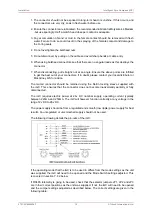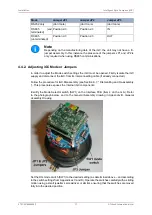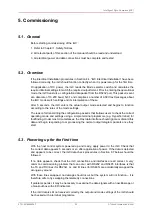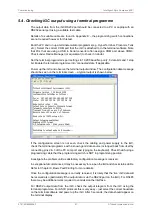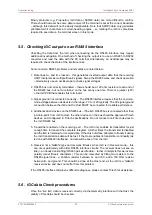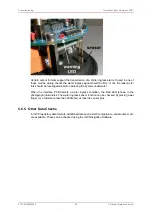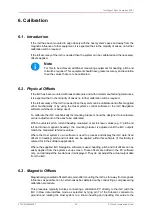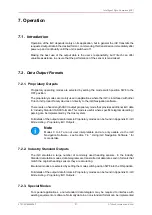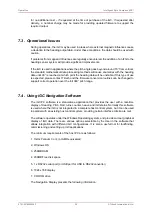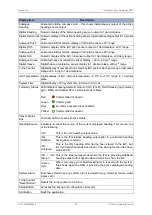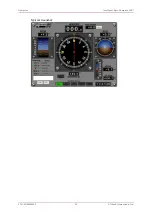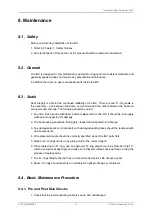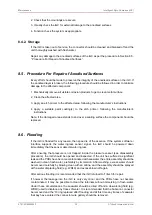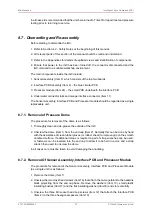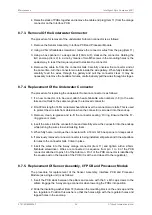
Intelligent Gyro Compass (iGC)
0707-SOM-00004-7
20
© Tritech International Ltd.
5. Commissioning
5.1. General
Before starting commissioning of the iGC :
1. Refer to Chapter 1,
2. All relevant parts of this section of the manual should be read and understood
3. All electrical power and data connections must be complete and tested
5.2. Overview
If the Electrical Installation procedures in Section 4.4, “iGC Electrical Installation” have been
followed correctly, the iGC should function correctly when it is powered-up for the first time.
On application of DC power, the iGC reads the Mode selector switch and calculates the
required internal settings to match the required output format. Prior to entering the operational
mode, the iGC transmits a configuration data packet from the RS232 port. This packet is sent
at a data rate of 19,200 baud, N,8,1 and comprises a number of ASCII text messages about
the iGC mode switch settings and its interpretation of these.
After 5 seconds, the iGC enters the actual output mode selected and begins to function
according to the rules of the mode settings.
The reason for transmitting the configuration packet is that it allows users to check the correct
operating mode and settings using a simple terminal programme (e.g. HyperTerminal) for
faultfinding. Under most circumstances, the Host data interface should ignore or discard this
data and begin responding to or processing the normal output telegram packets once they
start.
5.3. Powering up for the first time
With the host control system powered up and ready, apply power to the iGC. Check that
the correct data appears 5 seconds or so after application of power. If the data is detected
and appears to be correct, the iGC data check procedures in Section 8.7 below should be
followed.
If no data appears, check that the iGC connections and interfaces are all correct. A very
common commissioning problem that can occur with RS232 and RS485 interfaces is that
the TX and RX lines (for RS232), A+ and B- lines (for RS485) are accidentally swapped the
wrong-way around.
With these lines swapped, no damage should occur but the system will not function – it is
therefore safe to try swapping the telemetry connections.
If problems persist, it may be necessary to examine the data signals with an oscilloscope or
a breakout box with LED indicators.
If the iGC data is still not received correctly, the output and mode settings of the iGC should
be checked with a terminal programme

